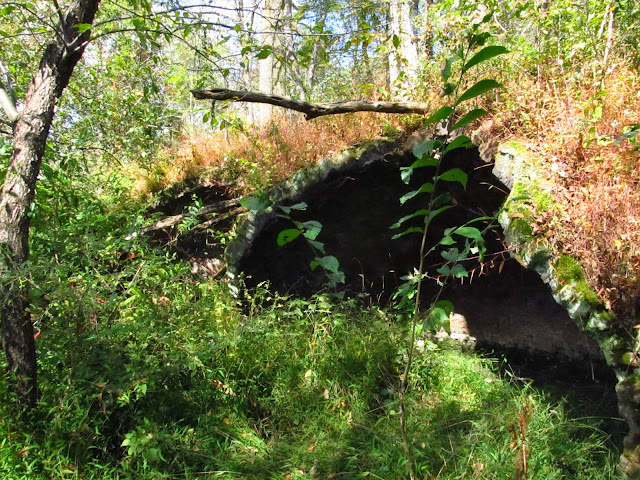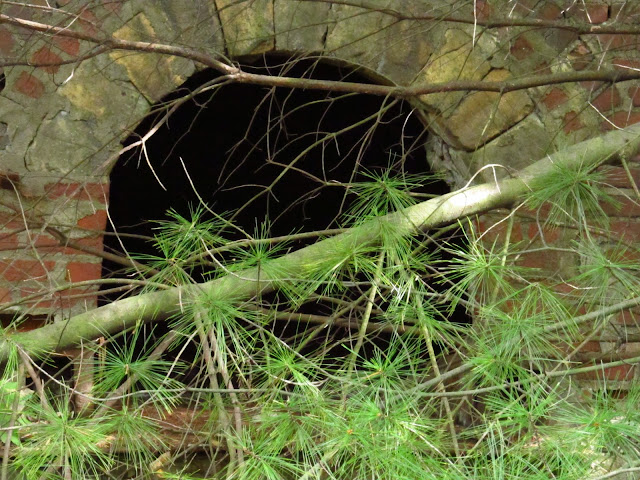The Clinton Mine and Coke Works was listed as a new mine and plant in the 1879-1880 Annual Report of Industrial Statistics. James Cohran and Co. are credited as opening the mine along with its 50 oven coke plant. The mine is listed as having natural ventilation.
In the report of the inspectors of mines from 1890, the mine is listed as connected to the Tip-Top and Valley mines and scheduled to be abandoned. It is also listed as being owned by H.C. Frick Co. at this time.
The ovens sit along an unnamed road off of Broadford Road. The ovens to the left of the road are located in a very brushy field but were more accessible. The ovens to the right only sit about 10 feet from the road but are located in very thick woods behind a very muddy ditch on a steep hill. I concentrated on the ovens to the left.
 |
| An almost buried oven. |
 |
| A nice example of different layers of brickwork. |
 |
| Inside is pretty intact. |
 |
| This was taken from the road. |
 |
| More brickwork. |
 |
| This is a collapsed building in front of the ovens. I'm not sure if this was part of the complex or something added later. All of the ovens were on the other side of a dead electric fence. |
 |
| Practically nothing left of this oven. |
 |
| Closeup on inside bricks. |
 |
| Bottom of one of the ovens. |
 |
| A piece of floor tile. |
 |
| I took a walk down the tracks but didn't find anything. |
 |
| An old house across from the ovens. I saw a total of three houses that might have been part of Clinton Works. |












































































